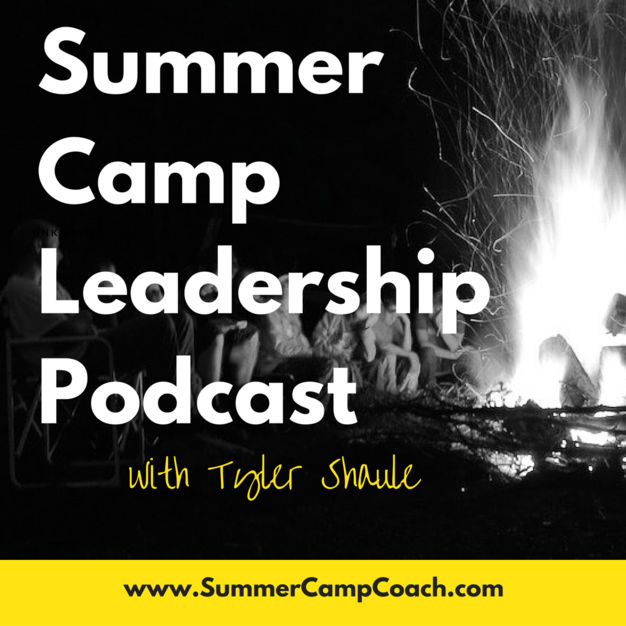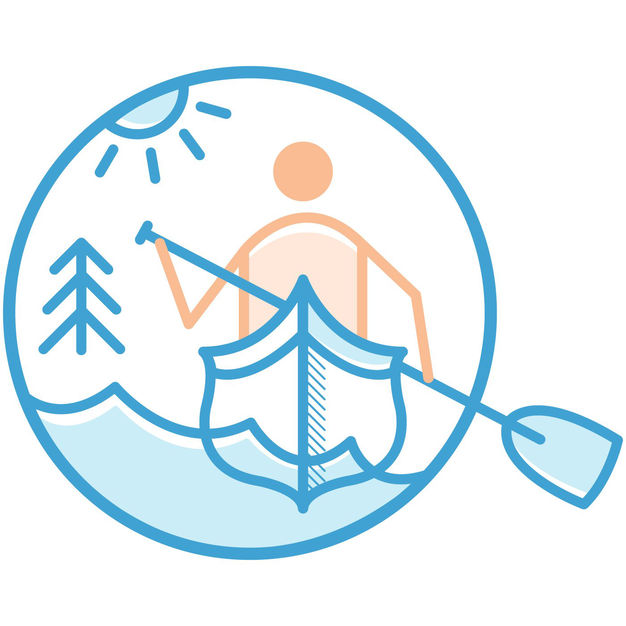
CampWire
American Camp Association
In-depth conversations with camp and youth development experts.
- 42 minutes 25 secondsEpisode 79 | Culturally Responsive Practices: Building Positive Youth Development with Dr. Tim Raines
In this episode, we sit down with Dr. Tim Raines to explore the transformative impact of culturally responsive practices in youth development. Dr. Tim shares his insights on why understanding and embracing diverse cultural perspectives is essential for fostering growth and belonging in young people.
Special thanks to our sponsor, UltraCamp!
Show notes:
- Dr. Tim's website
- Camping Magazine article: Planting Seeds of Inclusion: Practical Strategies for Inclusive Mentoring in Camps
- Webinar: Partnerships to Increase Equity and Inclusivity
The views and opinions expressed on CampWire by contributors are their own and do not necessarily reflect the views of the American Camp Association or ACA employees.
28 November 2024, 8:31 pm - 53 minutes 32 secondsEpisode 78 | Holding Space and Dealing with Cultural Trauma with John Hamilton
Camp is meant to be a safe environment - physically, mentally, and emotionally. So, how do we hold space for our campers and staff who may be dealing with trauma?
On this episode, John Hamilton from the Alliance for Camp Health joins us to discuss cultural trauma and creating safe, supportive, and connected spaces at camp and beyond.
Special thanks to our sponsor, UltraCamp!
Show notes:
- Article, Holding Space for the Splash Zone: Dealing with Cultural Trauma
- Alliance for Camp Health
- CampWell
The views and opinions expressed on CampWire by contributors are their own and do not necessarily reflect the views of the American Camp Association or ACA employees.
2 November 2024, 6:53 pm - 16 minutes 1 secondEpisode 77 | Staffing Summit Preview: Keynote Speaker Jill Lyons
Join us for October 28-30 for the 2024 Staffing Summit! In this conversation, we hear from keynote speaker Jill Lyons about her camp experience and its role in her journey into the corporate world.
Click here to register for the Staffing Summit!
Special thanks to our 2024 Staffing Summit sponsors:
The views and opinions expressed on CampWire by contributors are their own and do not necessarily reflect the views of the American Camp Association or ACA employees.
23 October 2024, 7:33 pm - 12 minutes 52 secondsEpisode 76 | Staffing Summit Preview: Keynote Speaker Dr. Patrice Buckner Jackson
Join us for October 28-30 for the 2024 Staffing Summit! In this conversation, we hear from keynote speaker Dr. Patrice Buckner Jackson about her background as an educator, coach, speaker, author, and more! Dr. PBJ's sessions will offer insights and tips on disrupting burnout.
Click here to register for the Staffing Summit!
Show notes:
- Dr. PBJ's website and podcast
- Disrupting Burnout: The Professional Woman's Lifeline to Finding Purpose
Special thanks to our 2024 Staffing Summit sponsors:
The views and opinions expressed on CampWire by contributors are their own and do not necessarily reflect the views of the American Camp Association or ACA employees.
18 October 2024, 5:23 pm - 13 minutes 1 secondEpisode 75 | Staffing Summit Preview: Keynote Speaker Leah Mesches
Join us for October 28-30 for the 2024 Staffing Summit! In this conversation, we hear from closing keynote speaker Leah Mesches about her background, connecting the camping industry to the corporate world, and what we can expect from her session at this year's Summit.
Click here to register for the Staffing Summit!
Blog post: Can I Really Spend Another Summer Working at Camp?
Special thanks to our 2024 Staffing Summit sponsors:
The views and opinions expressed on CampWire by contributors are their own and do not necessarily reflect the views of the American Camp Association or ACA employees.
11 October 2024, 7:00 am - 16 minutes 2 secondsEpisode 74 | One Way Out Is In: Staffing Summit Preview
Join us for this year's Staffing Summit! In this episode, we chat with event co-chairs Kim Aycock and Dave Schiff to learn all about this year's Summit, including new features, speaker details, special events, and more!
Event dates: October 28-30, 2024
Registration fee includes access to recorded sessions for 30 days following the conference.
Special thanks to our 2024 Staffing Summit sponsors:
The views and opinions expressed on CampWire by contributors are their own and do not necessarily reflect the views of the American Camp Association or ACA employees.
7 October 2024, 2:07 am - 42 minutes 10 secondsEpisode 73 | Gender Affirming Practices at Camp
On this episode of CampWire, HK Gilbert joins us from Camp Fire National Headquarters to discuss gender affirming practices at camp. Tune in for a conversation on creating a sense of belonging for all campers and what that looks like on a practical level.
Special thanks to our sponsor: UltraCamp
Show notes:
The views and opinions expressed on CampWire by contributors are their own and do not necessarily reflect the views of the American Camp Association or ACA employees.
28 September 2024, 12:20 am - 45 minutes 27 secondsEpisode 72 | Summer Camp with Castille Landon
Summer camp teaches us about friendship, the importance of play, and the power of being present. This summer's new movie, Summer Camp, reminds us of all this and more. Join us for a fun conversation with the film's director, Castille Landon, as we go behind the scenes to learn about the making of the movie, the joys of being at summer camp, and lessons learned along the way. Check out Summer Camp in theaters now!
Special thanks to our sponsor:
Show notes:
The views and opinions expressed on CampWire by contributors are their own and do not necessarily reflect the views of the American Camp Association or ACA employees.
14 June 2024, 9:23 pm - 1 hour 27 minutesEpisode 71 | The Summer Camp Economy
On this special episode of CampWire, Scott Brody, Owner and Director of Camps Kenwood & Evergreen, sits down with remarkable thought leaders and economists Elliot Haspel and Dr. Kathryn Anne Edwards. Tune in for a rich conversation on the summer camp economy, school-aged summer care for K-12 students, and what the world of childcare looks like in the summer space.
Show notes:
The views and opinions expressed on CampWire by contributors are their own and do not necessarily reflect the views of the American Camp Association or ACA employees.
31 May 2024, 10:58 pm - 1 hour 5 minutesEpisode 70 | Eclipse Megamovie 2024 and Rethinking Science Education
The 2024 solar eclipse is upon us! Tune in for a fascinating conversation with Dr. Laura Peticolas, principle investigator and project lead for the Eclipse Megamovie 2024, to learn about the eclipse, how she and her team are rethinking science education, and the impact of connection.
Special thanks to our sponsor:
Show notes:
Where Do Solar Jets Go?Eclipse Megamovie 2024
Eclipse Megamovie 2024 (EM2024) is funded by NASA to discover the secret lives of solar jets and plumes. Many jets and plumes seem to disappear or change from the time they are formed on the Sun and when they move out into the solar wind. To learn more about these solar phenomena, we will use photographs taken by volunteers to identify solar jets as they leave the Sun's surface and solar plumes as they grow and develop. We aim for our research efforts to provide some clues or answers to this question.
What is a solar jet?
A solar jet, or solar spicule, is a transient, jet-like feature in the Sun's atmosphere. They are narrow streams of plasma that erupt from the solar surface, reaching high speeds and extending thousands of kilometers into the corona. Solar jets are relatively small and short-lived, lasting only a few minutes. They are thought to be caused by magnetic reconnection, a process where intersecting magnetic field lines rearrange and release energy. These jets are important for understanding solar phenomena, as they contribute to heating the solar corona and accelerating the solar wind. They are also significant in the study of space weather, which can impact satellite and communication systems on Earth. Solar jets are typically observed using space-based solar observatories.
Why don’t we know as much about solar jets and plasma plumes as we do everything else about the sun?Solar Jets and Plasma Plumes have been “hidden” behind necessary instrumentation discs on satellites used by NASA. The discs are used to protect “white-light” cameras onboard a satellite from the bright solar photosphere. These cameras are used to study the outer solar corona in the visible wavelengths. The inner corona is thus blocked, making it hard to study the evolution and motions of these plasma jets and plumes. Jets and plumes can be observed leaving the solar photosphere but then NASA has only had limited ability to track their motion off the Sun into the solar wind. Satellite cameras, like those on SOHO satellite, can pick up any jets that make it out to their field of view. But the jets that don’t make it that far cannot be studied. Ground-based solar telescopes can study these features by looking at their green emissions, which can get past the atmosphere. Other visible colors emitted from the scattered photospheric light off these features are blocked by the atmosphere, but are important for understanding the plasma jet and plumes’ densities and perhaps their evolution.
Using the citizen science python competition platform Kaggle Community Competitions with volunteer photographers interested in coding and/or data analysts who want to explore and characterize solar transient plasma flows and jets, we will lead an image processing competition using Eclipse Megamovie python codes created in the past 5 years together with emergent AI systems, processed EM2024 images in FITS files, and NASA SDO/ AIA and SOHO/LASCO data.
Thanks to improved calibration, equipment, training, and software processes, we will improve on the 2017 movie (solar min) and compare it to the 2024 movie (solar max). It is anticipated that returning volunteers will produce especially good data given the experience and learning they will build on from participating in Eclipse Megamovie 2017.
In the remaining year and a half of the grant, we propose to publish journal articles on solar discoveries such as velocities of transient plasma flows and jets. The proposed effort tackles fundamental issues related to flare energy transfer in the low solar atmosphere. The results of this investigation will provide important information about the generation, energetics and dynamics of solar flares, jets and flows and coronal mass ejections, providing crucial understanding of the initiation of space weather events.
Expected Scientific DiscoveriesThe Eclipse Megamovie Project aims to add a new dimension to our existing studies of the Sun’s faint atmosphere, the inner corona. By stitching together thousands of images taken along the path of the 2017 total solar eclipse, we have already created a unique treasure-trove of information on how the corona changes over time. Radio-wave studies have allowed us to closely observe very rapid variations of the corona, but now we expect to study such processes directly using visible light and thus enrich our knowledge of the Sun’s dynamic atmosphere considerably. The data gathered via the Eclipse Megamovie Project will be made available publicly and are expected to allow scientists to analyze the Sun’s corona for many years to come. This will show how the Sun changes over a few hours, but also how it’s different after a period of seven years. The high-resolution processed images may also be shared with fellow solar eclipse researchers to incorporate into their own endeavors if desired, such as the work published by Pasachoff and Rušin in 2022 to understand the evolution of magnetic fields.
About our volunteers
Including the volunteers who will participate after the eclipse by helping to analyze the images of the eclipse taken by photographers in the field and the volunteers who are planning on photographing the eclipse and uploading their photographs (without any training or otherwise collaboration with us) we have over 500 volunteers. From these volunteers, we expect over 10,000 images of the Sun’s corona. Our volunteers have many different ways of participating, and here are the three primary ways they will participate:
- Photographing the eclipse with an equatorial (tracking) mount while following our requested exposures. In other words, these volunteers are setting their cameras up for our images specifically, including very specific settings for things like aperture (or the size of the opening that allows light through to the camera sensor) and ISO (how dark or light a photograph will be). The use of a tracking mount enables our volunteers to keep the sun fully centered in their photographs, ensuring a photograph that can be used to examine the sun’s corona for science. These volunteers will also take calibration frames in the form of flats, darks, and bias frames. These frames will allow us to know, without a shadow of a doubt, that what we see in the photograph is actually something seen from the sun, and not an “artifact,” or spec of dust on the lens or something else from the camera itself. This confidence in the image is critical for doing science with these kinds of photographs. We call these participants our STAR (Science Team Alpha Recruit) participants.
- Photographing the eclipse without a tracking mount and according to much simpler standards. We have called this method the “2017 method,” because the settings that we have requested for the photographs match what we requested for the 2017 total solar eclipse. These settings are much less restrictive, and we anticipate the photographs to be beautiful and incredible. These photographs, however, may not be as helpful for the scientific study we will commence. We call these team members our
- Image analysis via Python and Machine Learning and Kaggle Competition. This is a way to participate in the Eclipse Megamovie 2024 project without taking any photographs or needing to be in the path of totality. This is also the only form of participation that is available after the eclipse takes place. Our Python/ML volunteers will take the photographs that volunteers on April 8th took and use Machine Learning to align them. This is a trickier endeavor than it sounds, because the photographs will be taken from all over the path of totality. In order to properly align them, we need a lot of data from the photographer themselves, including calibration frames discussed above.
The EM2024 Discord server will be active and supported by EM2024 staff long after the eclipse itself takes place. This will also likely be a wonderful place to see our volunteers share the photographs they took on April 8th. This is also going to be the best way for volunteers to communicate with each other on April 8th as they make final decisions (based on the weather) about where they will set up to photograph the eclipse.
As of April 4th, 2024 we have 200 "STAR" volunteers, but we are calling them science participants. We have 358 MegaVolunteers, or MegaParticipants. And yes, we are looking for more participants. We also have 1,395 people on our general news listserv, many of whom signed up in 2017 but others who simply want to be kept abreast of any news about the project.
Eclipse Megamovie URLs of interest
- eclipsemegamovie.org (primary website)
- https://science.nasa.gov/solar-system/skywatching/eclipse-photographers-help-study-sun-during-disappearing-act/ (NASA article about Eclipse Megamovie and two other participatory science efforts)
- https://svs.gsfc.nasa.gov/14540/ (NASA’s Eclipse Megamovie press page)
- https://youtu.be/8VuhnzPvxZ8 (2017 MegaMovie: v1.1)
- https://eclipsemegamovie.org/faq (FAQ broken down by participation level)
- https://sonoma.az1.qualtrics.com/jfe/form/SV_eG132P4MWUlV9pc (Link to the survey to fill out if someone wants to volunteer with our project)
- https://discord.gg/JY6qbVu4uK (Link to join the EM2024 Discord Server. New members must read and agree to the rules and Codes of Conduct to fully join)
- https://youtu.be/jEEC1ULcDJw (Chasing Totality: Documentary about the 2017 Eclipse Megamovie Project)
Team Member Details
- Primary Investigator (PI): Dr. Laura Peticolas (Bio)
- Science PI: Dr. Juan Carlos Martinez Oliveros (Bio)
- Co-Investigator: Prof. Thomas Targett (Bio)
- Science Writer and Communications Lead: Hannah Hellman (ORCiD)
- Technology Specialist: Jeffrey Reedy
- Software and IT Support: Troy Wilson
The views and opinions expressed on CampWire by contributors are their own and do not necessarily reflect the views of the American Camp Association or ACA employees.
5 April 2024, 5:47 pm - 45 minutes 4 secondsEpisode 69 | Perseverance and Music with Mr. Desmian Barnes
Music has the power to teach, encourage, and inspire us - and if you joined us for the 2024 ACA National Conference in New Orleans, you know this to be true. On this episode of CampWire, we're joined by Mr. Desmian Barnes, Director of Bands for Sophie B. Wright High School, the marching band that graciously and enthusiastically performed at the conference's opening session and warmly welcomed ACA to New Orleans. Join us for a conversation on perseverance, the power of music, being a leader to young minds, and the importance of taking time for yourself - regardless of how busy your schedule is.
Show notes:
The views and opinions expressed on CampWire by contributors are their own and do not necessarily reflect the views of the American Camp Association or ACA employees.
2 March 2024, 5:12 am - More Episodes? Get the App
Your feedback is valuable to us. Should you encounter any bugs, glitches, lack of functionality or other problems, please email us on [email protected] or join Moon.FM Telegram Group where you can talk directly to the dev team who are happy to answer any queries.
 Summer Camp Leadership Podcast
Summer Camp Leadership Podcast
 Rec Heads and Camp Nerds podcast
Rec Heads and Camp Nerds podcast
 CampHacker Podcast - CampHacker
CampHacker Podcast - CampHacker
 Camp Code - Leadership & Staff Training Podcast for Camp Directors - CampHacker.TV
Camp Code - Leadership & Staff Training Podcast for Camp Directors - CampHacker.TV
 Because of Summer Camp - CampHacker.TV
Because of Summer Camp - CampHacker.TV